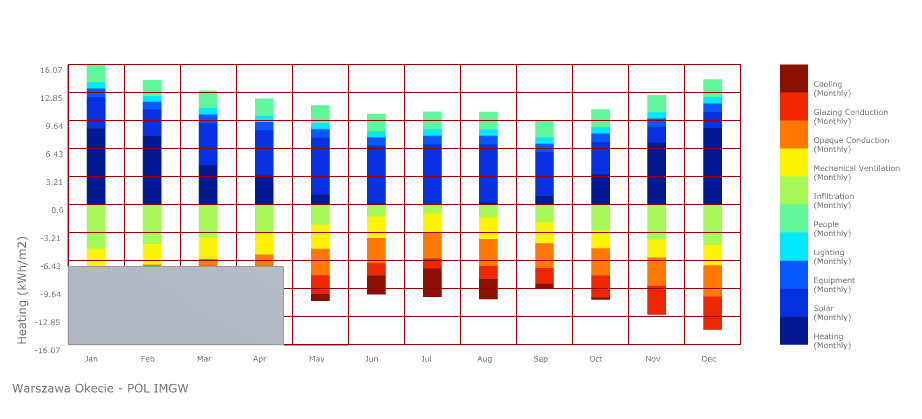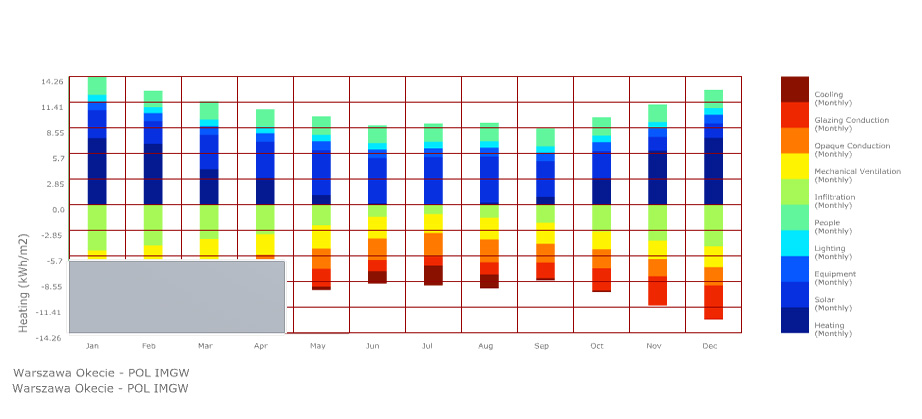Too small difference between 10 and 45 cm insulation?
Hi, I want to check influence of insulation thickness on energy balance
The problem is that the difference in heating need is very small.
The heating need is 46kWh/m2 year in 10cm insulation case and 39 kWh/m2 year. This is Dfb climate (Warsaw, Poland)









What software are you using?
This is Grasshopper+Honeybee - but this is just exporting to OpenStudio
What percentage of the loads are attributed to the constructions where you are changing the insulation levels? 7 out of 49 kWh/m2 sounds reasonable to me.
It seems that most of your heating load comes from infiltration (green in your energy balance). The losses through opaque conduction in Nov, Dec(orange) have been cut down by half or so, which makes sense.
Further improvements could be done to the glazing, or exploring whether such a high infiltration can be reduced.
On a separate note, for residential projects, sometimes the infiltration is enough to provide the Fresh air required for the occupants - not sure if this is the case.
@rraustad thank you for looking into the case. I am not perfectly sure if I understand the question - but I think the loads are changed by around 20-30%
@rafael.alonso thank you for commenting on the case you are right about the infiltration and the cause was that I had wrong value - (I did not normalize the value by the floor area and the value was much to high). I am running this on Ideal Air Loads - but I put an amount of ventialtion required for the average number of people